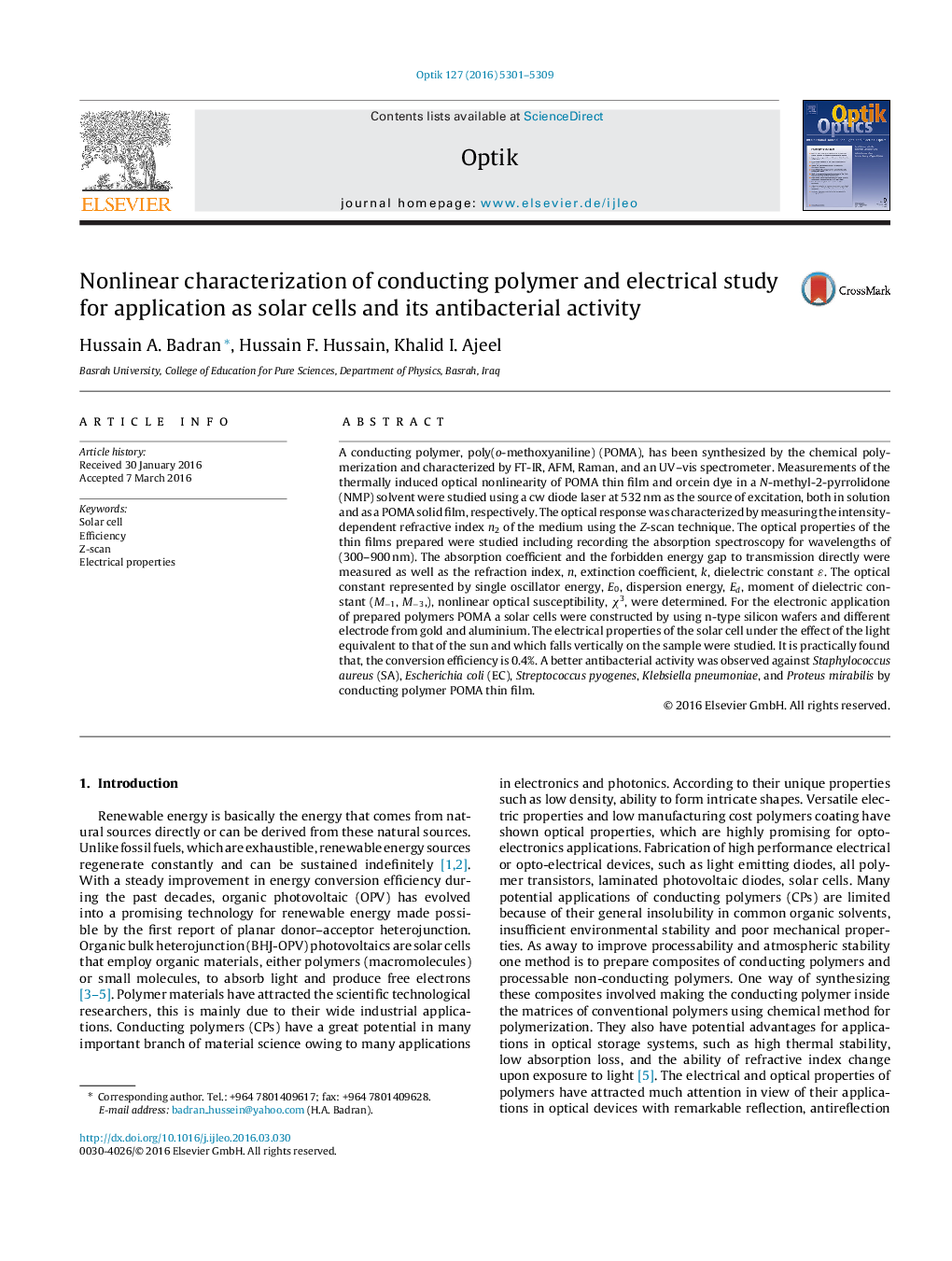| Article ID | Journal | Published Year | Pages | File Type |
|---|---|---|---|---|
| 847189 | Optik - International Journal for Light and Electron Optics | 2016 | 9 Pages |
A conducting polymer, poly(o-methoxyaniline) (POMA), has been synthesized by the chemical polymerization and characterized by FT-IR, AFM, Raman, and an UV–vis spectrometer. Measurements of the thermally induced optical nonlinearity of POMA thin film and orcein dye in a N-methyl-2-pyrrolidone (NMP) solvent were studied using a cw diode laser at 532 nm as the source of excitation, both in solution and as a POMA solid film, respectively. The optical response was characterized by measuring the intensity-dependent refractive index n2 of the medium using the Z-scan technique. The optical properties of the thin films prepared were studied including recording the absorption spectroscopy for wavelengths of (300–900 nm). The absorption coefficient and the forbidden energy gap to transmission directly were measured as well as the refraction index, n, extinction coefficient, k, dielectric constant ɛ. The optical constant represented by single oscillator energy, E0, dispersion energy, Ed, moment of dielectric constant (M−1, M−3,), nonlinear optical susceptibility, χ3, were determined. For the electronic application of prepared polymers POMA a solar cells were constructed by using n-type silicon wafers and different electrode from gold and aluminium. The electrical properties of the solar cell under the effect of the light equivalent to that of the sun and which falls vertically on the sample were studied. It is practically found that, the conversion efficiency is 0.4%. A better antibacterial activity was observed against Staphylococcus aureus (SA), Escherichia coli (EC), Streptococcus pyogenes, Klebsiella pneumoniae, and Proteus mirabilis by conducting polymer POMA thin film.
